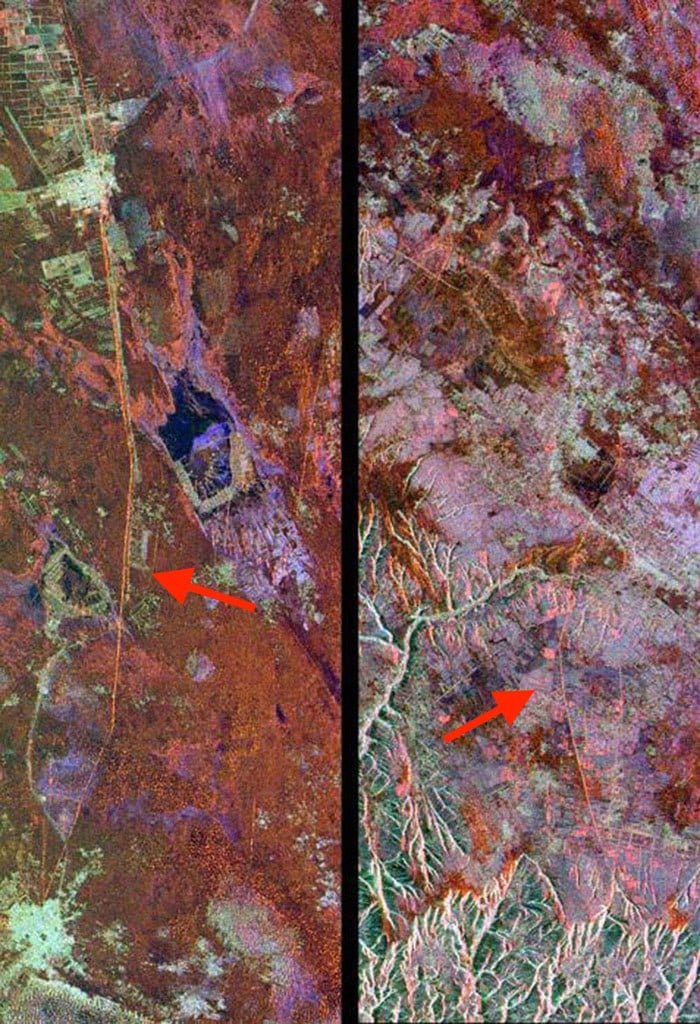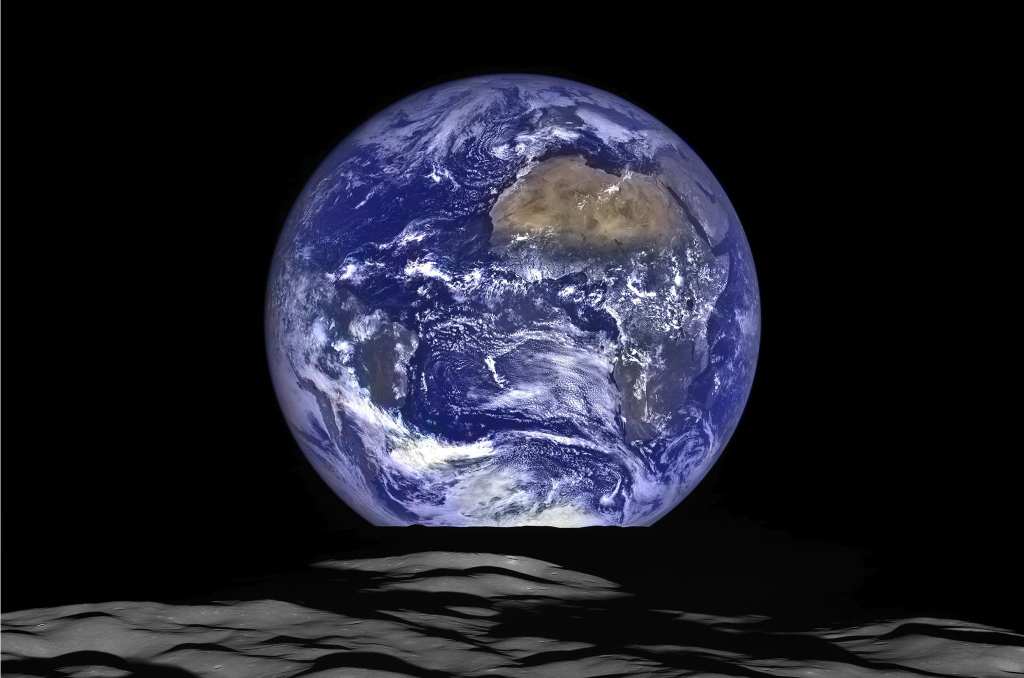Trending Now
Space might be the final frontier, but us sentimental humans just can’t help but look back to our planet once we’re out there. They say that astronauts who return from space experience a shift in perspective, having seen firsthand just how tiny our little blue marble is in the grand scope of things.
One of the most popular urban legends about being in space is that you can distinctly see the Great Wall of China from orbit. Other versions of this myth claim it’s the ONLY manmade structure visible from space, and some even go as far as to say you can see it from the moon (much farther away than just “space”).

Photo Credit: Hao Wei/Wikimedia
In actuality, when seen the Earth from the moon, it is so far away that even the shapes of the continents are barely distinguishable! So, no, you definitely can’t see the Great Wall from the moon, and seeing it from space also depends somewhat on your definition of where the Earth ends and “space” begins.
While there are varying answers to this, the general consensus is that the Kármán line, 62 miles (100 km) above us is the “start” of space. Low Earth orbit satellites are even further away, ranging anywhere from 99-1200 miles (160-2000 km). Check out this handy chart:

Photo Credit: NOAA
Sadly, the Great Wall appears to be barely visible even from Low Earth orbit.
While many astronauts had already noted this, perhaps the most official confirmation that it cannot, in fact, be seen from space comes from China’s own first man in space, Yang Liwei, after his mission to orbit in 2003. It even prompted the Chinese government to officially revise school textbooks to reflect this truth.
According to former NASA astronaut Jeffrey Hoffman, who also never saw the wall on numerous missions into space, “The problem is that the human eye is most sensitive to contrast, and the color of the wall is not that different from the ground on either side of it.” The best way to see the wall from space is to use high-resolution cameras with optical zooms and a wide array of filters.

Photo Credit: NASA/DYK?
While the Great Wall definitely isn’t visible to the naked eye from space, there are several other manmade structures that are.
1. China’s pollution
While China sadly couldn’t claim the Great Wall as a monument that can be seen from space, they did get on the list – just not how they’d hoped.

Photo Credit: NASA Earth Observatory
The photo above was taken on December 4, 2016. The smog was so dense that it actually grounded flights, and Beijing was put on orange alert as a heavy blanket of smog (seen in gray) covered vast swaths of the country for several days.
An orange alert means the air has a PM2.5 measurement upwards of 150 micrograms per cubic meter of air. The World Health Organization considers levels below 25 to be safe for humans.
China’s pollution problems have long been the subject of news stories, but the government has recently made serious cleanup efforts that appear to be yielding results, though sometimes they’ve been somewhat overzealous. They’ve also made significant investments in clean energy, so here’s hoping for clear skies over Beijing in the future!
2. The Great Pyramids
The last surviving members of the original “Seven Wonders of the Ancient World,” the Great Pyramids of Giza have withstood desert winds, looters, and wars for several millennia.
While there are plenty of conspiracy theories out there about how the pyramids are the work of aliens, they do have one very real connection to space – we can see them from out there!

Photo Credit: Terry Virts
Astronaut Terry Virts took this photo on his last day aboard the International Space Station. On days with good visibility, the pyramids are actually quite visible, especially when the sun hits them just right to create perfect shadows.
3. Roads in the desert
This one sounds kind of odd – you can’t see the Great Wall of China from space… but you can spot a two-lane highway?
When it comes to roads in the desert, you absolutely can. It all goes back to the point astronaut Jeffrey Hoffman made about why we can’t see the Great Wall – contrast.

Photo Credit: Chris Hadfield
While the wall is too similar to its surroundings and also matches the winding, mountainous topography, desert roads tend to be long, straight lines that stick out like a sore thumb from the desolation all around them.
4. Greenhouses of Almería
In Spain’s southern region of Andalusia is a manmade structure (or rather, series of structures) that is one of the most distinct areas of the planet when seen from space.

Photo Credit: NASA Earth Observatory
The area of Almería was historically so dry and arid that it was once a popular location for filming spaghetti Westerns. Over the last 30-40 years, however, hydroponic farming techniques have transformed the region into Europe’s largest greenhouse, providing enormous, year-round harvests of a wide variety of produce.
Thousands of plastic/tin-covered greenhouses cover the landscape, reflecting enough light back to space to be clearly visible from orbit. Interestingly, the greenhouses reflect so much light that they’re actually cooling the local region, even as the rest of Spain gets hotter!
5. Dubai’s artificial islands
Why is it that every time you hear about something crazy and creative being done, it’s often in Dubai? Maybe they’re bold visionaries, or maybe all that oil money just allows them to explore their playful side more than most. Either way, if anyone’s going to build something to be seen from space in this day and age, it’s definitely the people of Dubai.
While that wasn’t the explicit goal, that’s exactly what they’ve done with the Palm Islands, a series of manmade islands off the coast of Dubai created by dredging sand from the Persian Gulf.

Photo Credit: NASA
The unique thing about the Palm Islands is how little concrete or steel was used in their construction. The islands are almost entirely sand, leading to some concerns about long-term erosion.
6. Cities at night
Of all the things man has made that can be seen from outer space, there are probably few things quite as striking and beautiful as the sight of our major cities at night.
When the sun goes down, the bright lights of big cities are clearly visible from space, creating patches of brilliant, luminous yellow on an otherwise dark planet.

Photo Credit: NASA Earth Observatory
Gorgeous, right?
If you enjoyed this, check out:
https://didyouknowfacts.com/answers-burning-question-just-sex-work-space/






